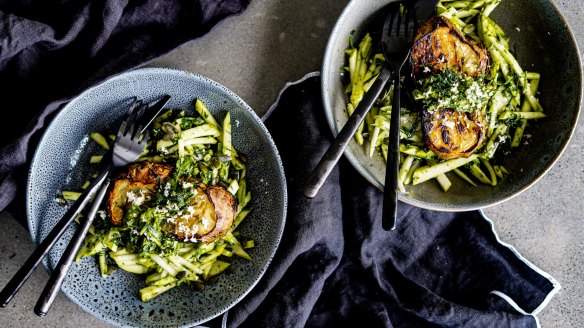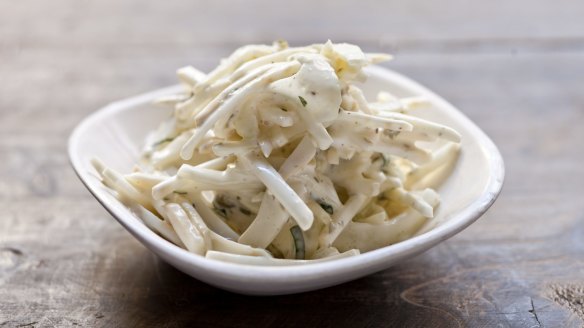Celeriac: Everything you need to know

It won't win any prizes in a beauty contest. But this knobbly, long-lasting veg has been embraced by chefs, who love its versatility, unique flavour and unctuous texture.
What is it?
Celeriac was originally a European salt marsh celery that grew a big swollen bulb between stem and root. Under its rhino-like skin is a fibrous white flesh that, when raw, has a texture like tough apple and a flavour like celery. But with cooking it becomes smooth, sweet and velvety.
A member of the Apiaceae family (which includes carrot, coriander and fennel), it contains a compound called apigenin, one of the active ingredients in chamomile, and a flavonoid that gives celeriac its aroma and slippery mouthfeel.

Why do we love it?
"I have had a deep love affair with celeriac since my first remoulade many years ago," says chef David Moyle from Harvest in Newrybar, in the NSW Northern Rivers region. "It brings everything to the party: texture when raw or cooked, aroma, acidity."
One of Moyle's signature dishes is celeriac wrapped in hay, cloaked in salt, and baked in a scotch oven at 160C for four hours.
Karen Martini has several celeriac recipes in her new book, Cook.
"It is totally underrated," she says. "We used to grate it with horseradish, mix it with mustard and olive oil and serve that as a condiment with a grilled rib-eye."
Martini also suggests swapping celery in a mirepoix for diced, roasted celeriac to cook with duck. "It is also brilliant finely julienned in an Italian coleslaw with finely sliced cabbage, seasoned, dressed, and finished with grated parmesan cheese."
How do you use it?
- Peel the root and cook in chicken stock and garlic for 15-20 minute until soft, then mash until smooth. Serve with any meat.
- Peel and finely julienne the bulb, and perhaps some fennel, by hand or with a mandolin and dress with mayo, lemon juice and a little mustard for a quick remoulade.
- When making Sicilian sweet and sour caponata to go on top of grilled fish, use celeriac instead of celery for a rich textured sauce.
- Make celeriac steaks by drizzling thick slices of celeriac with olive oil, season with salt and pepper and roast for three hours at 160C.
- Or add a peeled and grated celeriac bulb to a light Waldorf-inspired salad, along with grated granny smith apples and freshly toasted walnuts, dressed with a vinaigrette.
Where do you get it?
Celeriac has become a supermarket staple, but quality can be an issue. Celeriac should be quite hard, dense and heavy for its size, with crisp green stem pieces. A bad-quality celeriac will be woody, tough and hollow, with wilted leaves and stem. Farmers' markets and greengrocers are the best places to buy them. Trim the roots and stems and it can be stored in the crisper for several months. But it is best used fresh.
Send your culinary conundrums and ingredient suggestions to brainfood@richardcornish.com.au or Twitter and Insta @foodcornish.
Appears in these collections
- More:
- Food
- Brain food
